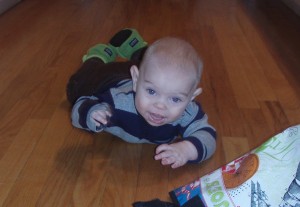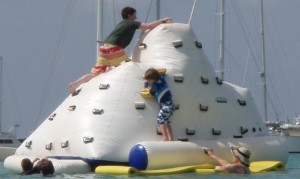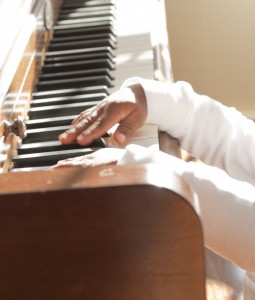A key ingredient to almost all activities, including paying attention at school! is having a stable base, or strong body. We know that strong and flexible bodies lead to high performance on the playing field. More important is the influence of core strength on the amount of energy available for learning and the coordination necessary to acquire every day skills. Strong bodies lead to strong minds. This section reviews simple strategies and activities to help build strong bodies from birth on.
Core Strengthening
Core Strength refers to the all the muscles wrapped around the body, beginning with the neck and including the large group of hip muscles that connect the body to the legs. Along with holding all the body parts together, “core strength” is a key ingredient for balance and motor coordination. The Core Strengthening section outlines muscle building activities targeting the following areas: 1. Back and neck extensor muscle strengthening 2. Trunk flexor muscles 3. Integration of all trunk muscles to allow for rotation.
Hand Strengthening
From picking up a cheerio to buttoning a sweater to completing the writing section of the SAT, strong muscles in the wrist, hand and fingers are key. Learn how you can begin strengthening those little muscles from the first day of life on. Discover how every day activities, such as little “sous chef” kitchen prep to simple crafts can develop fine motor skills.
Motor Planning
This is the child’s “Motor IQ.” Motor planning is NOT learning how to crawl, walk, jump or climb the stairs; the ability to throwing or catch a ball, swing a tennis racquet or baseball bat…or even how to use a fork, pencil, scissors. Motor planning is a true example of, “The sum of its parts is greater than the whole.” Here are just a few of the many components to motor planning:
- Motor Sequencing: The ability to link a series of movements fluidly and with good timing.
- The ability to execute two motor actions simultaneously.
- The ability to generate an idea of how a motor action should occur.
- This section analyzes each of these areas and lists specific activities to build these skills. Pulling it all together, how to enhance overall motor planning, this all important “Motor IQ” is discussed.
Bilateral Motor Coordination
Encouraging children to use two hands is critical for motor control as well as building pathways in the brain. Simple Pat-a-Cake and “How big is…?” games from the cradle begin the baby’s discovery of how the two sides of the body work together. Simple games, matched to physical maturation teach children how to consistently use both hands, important for gross motor play as well as fine motor activities.
The body and brain require ongoing communication between the right and left sides. When good communication and teaming occurs, skilled gross and fine motor skills can develop. The neurological system also builds pathways leading to more brain power for learning.
This section reviews fun games to help children learn how to consistently use both hands, leading to skilled movement in large motor play as well as school activities such as writing.
Visual Attention and Eye-Hand Coordination
Children need to use their eyes to guide their movements, whether it is on the tennis court or in the classroom. Building blocks begin as the infant looks into the parents’ eyes for the very first time. Extending visual attention and then coupling this with simple hand movements such as reaching for a toy are essential foundations for the star athlete, whether it’s baseball, basketball or just about any motor activity you can imagine. As a preschooler struggles with a crayon or student learns cursive writing, when the eyes and hands work together, the easier it is to master the skills!
This section provides guidance in how to activate and maximize visual attention and subsequent eye hands skills.




